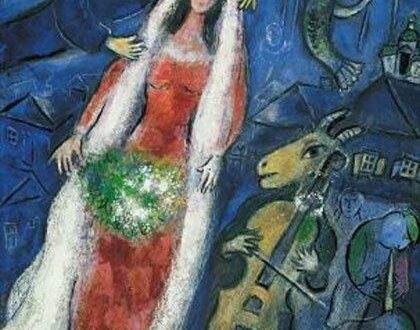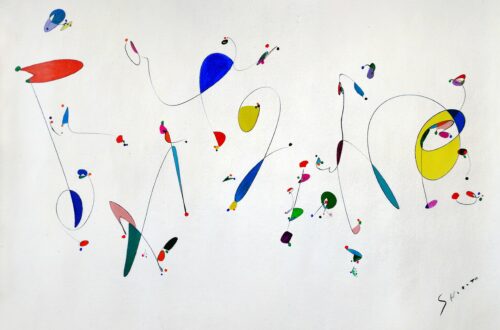The Musicians exemplifies Caravaggio’s pioneering form of realism and his intense use of chiaroscuro, which proved to be hugely influential to the development of Baroque painting. In this article, Singulart takes a closer look at Caravaggio’s life and at The Musicians.
Who was Caravaggio?
Michelangelo Merisi da Caravaggio (1571-1610) was an Italian painter and pioneer of Baroque painting. He was born in Milan but moved to the town of Caravaggio in 1576 with his family to escape the Plague. Both his father and his grandfather died on the same day in 1577 and his mother died in 1584, just after he began his apprenticeship to the Milanese artist Simone Peterzano. In 1592 Caravaggio fled to Rome after fighting and injuring a police officer, an event that would become a trend throughout his tumultuous life. In Rome, he worked in the workshop of Giuseppe Cesari, Pope Clement VIII’s favorite artist, during a time when the Church was building many new palazzos and churches that needed decorating and thus painting was in high demand. They were also looking for a new style to follow on from Mannerism, in an attempt to outshine the threat of Protestantism. Due to this, Caravaggio’s surroundings were very favorable to the development of his new style of naturalism and his use of intense chiaroscuro.

Caravaggio, with the help of some influential friends, decided to try and establish a name for himself in Rome. It was with some of his early masterpieces, such as The Cardsharps, that he caught the eye of Cardinal Francesco Maria del Monte. He subsequently became Caravaggio’s patron and commissioned many works from the artist, including The Musicians. Caravaggio began to paint religious works in this same realist style and he was commissioned to decorate the Contarelli Chapel in the San Luigi dei Francesi church. This work was met with huge acclaim and led to many more commissions around Rome.
However, on May 29th 1606, Caravaggio killed a man named Ranuccio Tomassoni in circumstances that remain unspecified. He was forced to flee the Roman authorities and he headed to Naples, where he stayed long enough to also establish an excellent reputation as a painter. He then traveled to Malta and Sicily before returning to Naples in 1609. He did eventually return to Rome and was pardoned in 1610, the same year as his death.
Caravaggio’s style
Caravaggio’s style is characterized by a highly realistic rendering of the human form, combined with an exaggerated and dramatic use of lighting, known as chiaroscuro. This resulted in highly expressive and moving paintings which depicted a range of scenes full of tension, emotion and movement. Consequently, Caravaggio was very influential in the development of Baroque painting, which was characterized by this same sense of movement, drama and tension.

What’s happening in The Musicians?
The Musicians is a painting in oil on canvas by Caravaggio which depicts an allegory of music through a contemporary performance scene. It was characteristic of Caravaggio to depict a historical or timeless subject matter through his contemporary lens in order to make it more evocative to his contemporary viewers. The Musicians is one of the first paintings he completed under the patronage of Cardinal Francesco Maria Del Monte in Rome, around 1595. It depicts four male figures draped in classical robes, three of whom are holding musical instruments and one is dressed as Cupid while he reaches for a grape. The painting’s meaning is allegorical, suggesting a link between music nourishing love in the same way that food sustains life. Three of the figures are turned towards the viewer and the fourth has his back turned towards us as he reads a manuscript of madrigals.
The composition is cropped and the figures fill most of the canvas in order to create an intimate and intense scene, highlighted by the expressiveness of the figures. Musical scenes were popular at the time, as the Church was encouraging the revival of music. However, The Musicians is clearly secular and seems to show the influence of works such as Titian’s Concert Champetre. The Musicians was Caravaggio’s most ambitious composition at the time of its completion and despite several inconsistencies within the artwork, it remains one of his most remarkable early pieces.













